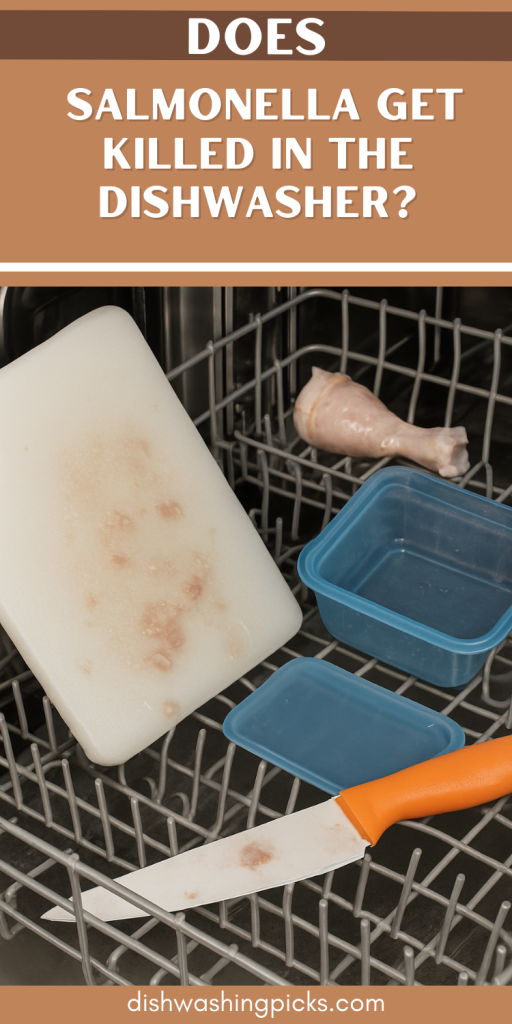
—
Does Salmonella Get Killed in the Dishwasher? Let’s Talk Germs, Heat & Dirty Dishes
So you just hosted a backyard BBQ, flipped some chicken, and now your cutting board looks like a crime scene. You’re tired. The dishwasher’s right there, blinking like it’s saying, “C’mon, just toss it in. I’ll take it from here.”
And that little voice in your head goes, “Wait… does the dishwasher actually kill salmonella?”
Good question. Let’s dig into it—without turning this into a science class snoozefest.
First Things First: What Even Is Salmonella?
Okay, quick detour. Salmonella isn’t some super exotic thing. It’s just a type of bacteria that loves to hang out in raw or undercooked meat (especially poultry), eggs, and even veggies if they’ve been cross-contaminated. It’s the kind of guest that shows up uninvited, crashes your digestive system, and leaves you hugging the toilet for a day or two.
Gross, yeah. But super common.
Now, naturally, we want to evict this uninvited guest from anything it touches — utensils, plates, countertops, all of it. But does your dishwasher have what it takes to do that? Let’s see.
How Hot Does a Dishwasher Actually Get?
Let’s talk temps. Most standard dishwashers heat the water to somewhere between 120°F and 160°F (that’s about 49°C to 71°C for the metric folks).
Salmonella? According to the CDC, it starts to die off around 130°F (54°C) — but it’s not instant. It takes a bit of time. If you want to really make sure it’s dead and gone, you’re looking at a sustained temp of about 160°F (71°C) for a few minutes.
👉 So here’s the deal: If your dishwasher is running a high-heat or sanitizing cycle (the kind that literally says sanitize), then yep — it can kill salmonella. Especially if it’s Energy Star certified or newer, with modern heating elements.
If you’re running a quick eco-wash with lukewarm water? Ehh… it might not be doing the full extermination job.
What About Stuff Like Wooden Cutting Boards?
Now, before you go tossing your raw chicken cutting board into the dishwasher, let’s talk materials. Wooden boards? Bad idea. Dishwashers can crack, warp, and destroy them. Plus, they can trap bacteria deep in little cuts and grooves that water jets just can’t reach.
So if that salmonella-tainted board is made of wood? Hand wash it with hot, soapy water and give it a nice vinegar or bleach soak after. That’s your safest bet.
Plastic boards, though? Dishwasher-friendly all day. Just make sure they’re labeled as such.
Can I Rely on the Dishwasher 100%?
Okay, here’s the honest truth: your dishwasher is great for cleaning and, in many cases, sanitizing — especially if you use those hotter cycles. But if something’s heavily contaminated (think: raw meat juices soaking into crevices), don’t just hope the dishwasher saves the day.
It’s like using deodorant and hoping you don’t need to shower. Helps? Sure. Replaces a full clean? Not quite.
So if you’re serious about killing germs like salmonella, here’s what you should do:
- Use the sanitize setting if your dishwasher has it.
- Pre-rinse or scrub off any visible raw meat residue first.
- Don’t overload — make sure water can actually hit all surfaces.
- Run the full cycle — no shortcuts.
Bonus Tip: What If You Don’t Have a Dishwasher?
No worries. You can still kill salmonella the old-school way:
- Use hot, soapy water.
- Let stuff soak for a bit.
- Follow up with a bleach rinse (1 tablespoon of bleach per gallon of water) if you’re being extra cautious.
And of course — wash your hands after handling raw meat. It’s the oldest (and most effective) trick in the book.
So… Does It Kill Salmonella or Not?
Short answer? Yes, a good dishwasher with the right heat settings can kill salmonella — especially on plastic and non-porous kitchenware.
Long answer? It depends on the dishwasher, the cycle you choose, and what you’re washing.
If it’s wooden, deeply grooved, or soaked in raw meat juice? Hand wash it. No shortcuts.
So next time you’re hovering over your dishwasher, asking life’s big questions — now you’ve got answers. And hey, that’s one less thing to stress about while you clean up the kitchen chaos.
